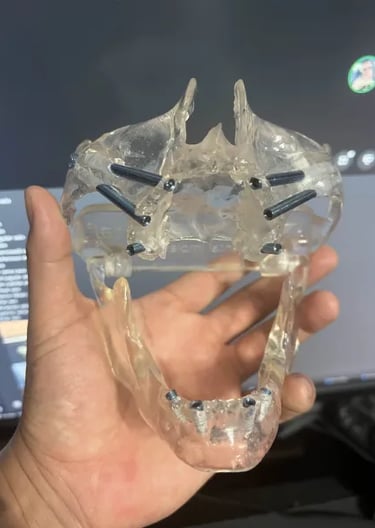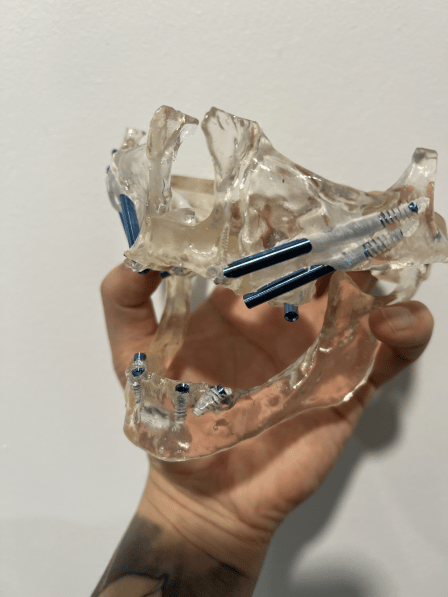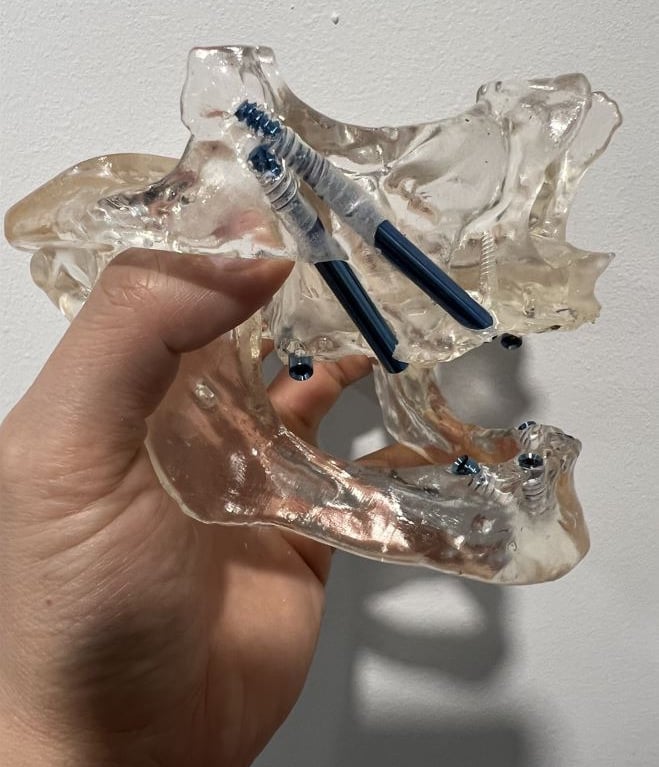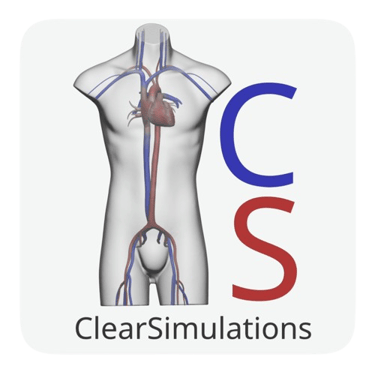The Importance of 3D-Printed Dental Models for Pre-Operative Planning
11/20/20243 min read


The Importance of 3D-Printed Dental Models for Pre-Operative Planning
In modern dentistry, technological advancements have redefined how procedures are planned and executed, significantly improving patient outcomes and operational efficiency. Among these innovations, 3D printing has emerged as a critical tool in pre-operative planning, transforming how oral surgeries are conceptualized and performed. Studies have shown that integrating 3D printing technology into dental practices enhances precision, patient communication, and surgical outcomes (Moskovich et al., 2022; Dawood et al., 2015).
1. Enhanced Precision and Customization
Each patient's oral anatomy is distinct, necessitating tailored pre-operative planning. Traditionally, practitioners relied on 2D X-rays, CT scans, or plaster models, which often lacked the necessary detail. In contrast, 3D-printed models, derived from high-resolution imaging, capture even the finest nuances of a patient's anatomy, allowing for highly accurate and personalized surgical preparation (Moskovich et al., 2022). These models enable dentists to rehearse complex procedures such as implant placements, jaw reconstructions, and root canal treatments with unparalleled precision, reducing intraoperative uncertainties and ensuring optimal outcomes.
Research underscores the role of 3D printing in enhancing surgical accuracy. For instance, Moskovich et al. (2022) highlight its applications in trauma management and orthognathic surgery, where precise replication of anatomical structures is crucial for success. Additionally, Dawood et al. (2015) emphasize the importance of such technology in achieving better clinical results through improved customization and planning.
2. Improved Communication with Patients
Understanding dental procedures can be daunting for patients, particularly when explanations rely solely on abstract imagery or technical descriptions. A 3D-printed model offers a tangible and accurate representation of their dental anatomy, bridging the gap between practitioner explanations and patient comprehension. Studies have shown that visual aids like 3D models enhance patient engagement and trust, leading to better adherence to treatment plans and reduced anxiety (Dawood et al., 2015).
Holding a replica of their oral anatomy allows patients to visualize problem areas and understand proposed treatments more thoroughly. This approach has been demonstrated to empower patients to take an active role in their care, fostering better communication and confidence in the dental team.
3. Reduced Surgical Time and Increased Efficiency
One of the most practical benefits of 3D-printed dental models is their ability to streamline surgical workflows. By enabling practitioners to rehearse procedures beforehand, these models minimize on-the-spot adjustments and decision-making during surgery, reducing overall operating times (Moskovich et al., 2022). Shorter surgeries not only benefit patients—reducing time under anesthesia and associated risks—but also enhance the efficiency of dental practices, allowing more patients to be treated.
4. Lower Risk of Surgical Errors
The detailed anatomical accuracy provided by 3D-printed models significantly lowers the risk of surgical complications. By simulating procedures and identifying potential challenges in advance, dentists can address issues such as nerve positioning or complex bone structures pre-operatively, leading to safer surgeries (Moskovich et al., 2022). Such pre-emptive planning is particularly vital for high-risk procedures like implant placement and corrective jaw surgeries.
5. Cost Savings for Both Patients and Practices
Although implementing 3D printing technology requires an initial investment, its long-term benefits are undeniable. Shortened procedure times, decreased error rates, and reduced need for corrective surgeries result in cost savings for both dental practices and patients. Practices experience improved resource allocation and higher patient throughput, while patients benefit from fewer follow-up appointments and lower overall treatment expenses (Dawood et al., 2015; Moskovich et al., 2022).
Conclusion
The integration of 3D printing in dentistry represents a leap forward in pre-operative planning, offering unmatched precision, improved communication, and enhanced safety. As studies demonstrate, these advancements lead to better clinical outcomes and higher patient satisfaction, solidifying 3D printing as a cornerstone of modern dental practice.
References
Dawood, A., Marti Marti, B., Sauret‐Jackson, V., & Darwood, A. (2015). 3D printing in dentistry. British Dental Journal, 219(11), 521–529. https://doi.org/10.1038/sj.bdj.2015.914
Moskovich, L., Kablan, F., & Srouji, S. (2022). 3D printing and virtual surgical planning in oral and maxillofacial surgery. Journal of Clinical Medicine, 11(9), 2385. https://doi.org/10.3390/jcm11092385




Precision
Custom 3D printed anatomical models for education.
info@clearsimulations.com
(+1) 813 455 9388
© 2024. All rights reserved.
Contact
Subscribe
Subscribe for exclusive deals, updates, and the latest product launches!
